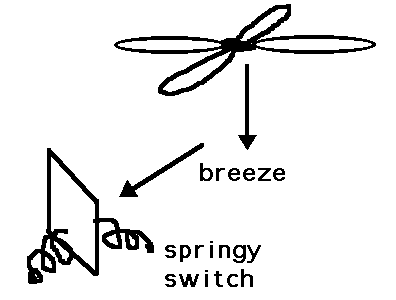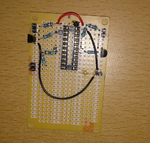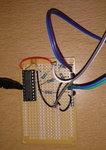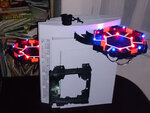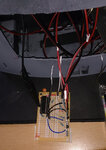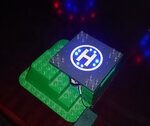snivelers
Newbie level 5
Trying to put together an indoor quad-copter game for the kids involving three (or maybe more) landing pads that detect when a small, indoor quad-copter lands on them and then takes off.
Each landing pad would light up a ring of leds when landed on and signal an enclosed rf sender, which in turn signals an rf receiver attached to a raspberry PI which acts as the game controller (Various games based such as how quickly you can get from one pad to another with some obstacles in between etc etc). I want the pads to be easily moved and not have any cables coming from them, so something like 2 AA batteries supplying 3 volts on each of them.
The issue I'm having is detecting when the quad-copter - which is only around 20g in weight - lands on a pad.
Taking the pressure plate approach, anything sprung I've tried doesn't deflect enough for small weights to get a consistent on or off. Also combination of a very weakly (leaf) sprung landing pad together with a magnet on the underside of the pad and read switch on the base came the closest but still wasn't reliable. Looked at force resistors too but what I've seen isn't sensitive enough. Haven't completely given up on the pressure plate idea; have ordered some thin copper sheet and thinking of using some combination with a plastic lamination pouch that would hopefully reset after being landed on - if anyone has other ideas I'm all ears.
As the quad-copter has 4 motors on each corner and a lipo battery underneath, I'm thinking that it should present a reasonable emf disturbance to be detectable within a few centimeters when it lands. Would something like a Hall sensor be suitable for this? I want to try to keep components/cost to a minimum and ultimately I'm just after a result of on or off.
Thanks in advance.
Each landing pad would light up a ring of leds when landed on and signal an enclosed rf sender, which in turn signals an rf receiver attached to a raspberry PI which acts as the game controller (Various games based such as how quickly you can get from one pad to another with some obstacles in between etc etc). I want the pads to be easily moved and not have any cables coming from them, so something like 2 AA batteries supplying 3 volts on each of them.
The issue I'm having is detecting when the quad-copter - which is only around 20g in weight - lands on a pad.
Taking the pressure plate approach, anything sprung I've tried doesn't deflect enough for small weights to get a consistent on or off. Also combination of a very weakly (leaf) sprung landing pad together with a magnet on the underside of the pad and read switch on the base came the closest but still wasn't reliable. Looked at force resistors too but what I've seen isn't sensitive enough. Haven't completely given up on the pressure plate idea; have ordered some thin copper sheet and thinking of using some combination with a plastic lamination pouch that would hopefully reset after being landed on - if anyone has other ideas I'm all ears.
As the quad-copter has 4 motors on each corner and a lipo battery underneath, I'm thinking that it should present a reasonable emf disturbance to be detectable within a few centimeters when it lands. Would something like a Hall sensor be suitable for this? I want to try to keep components/cost to a minimum and ultimately I'm just after a result of on or off.
Thanks in advance.
